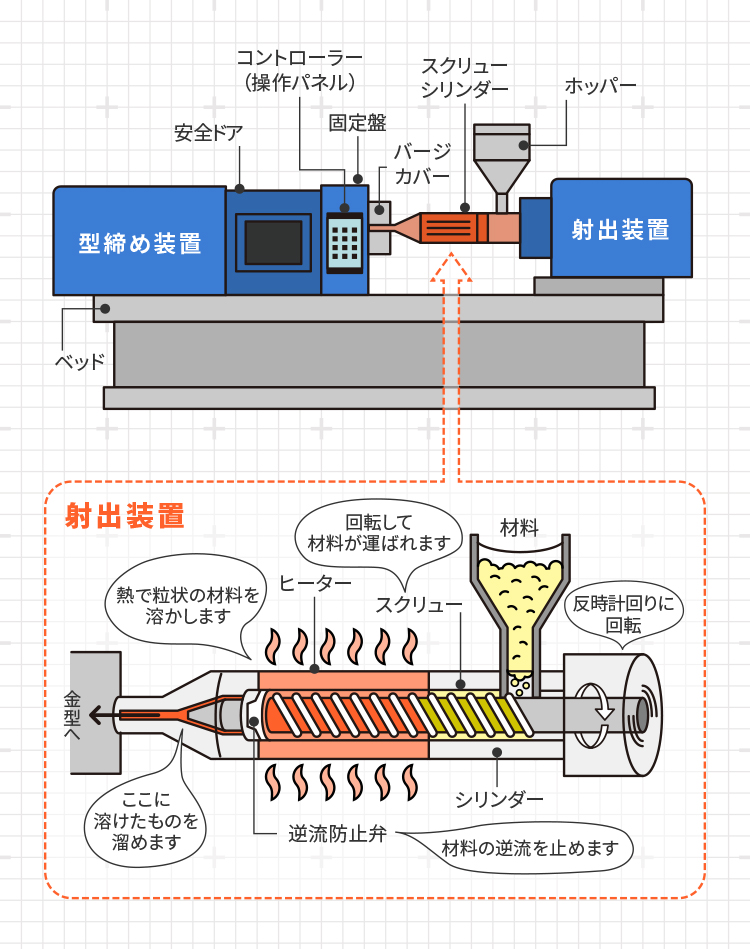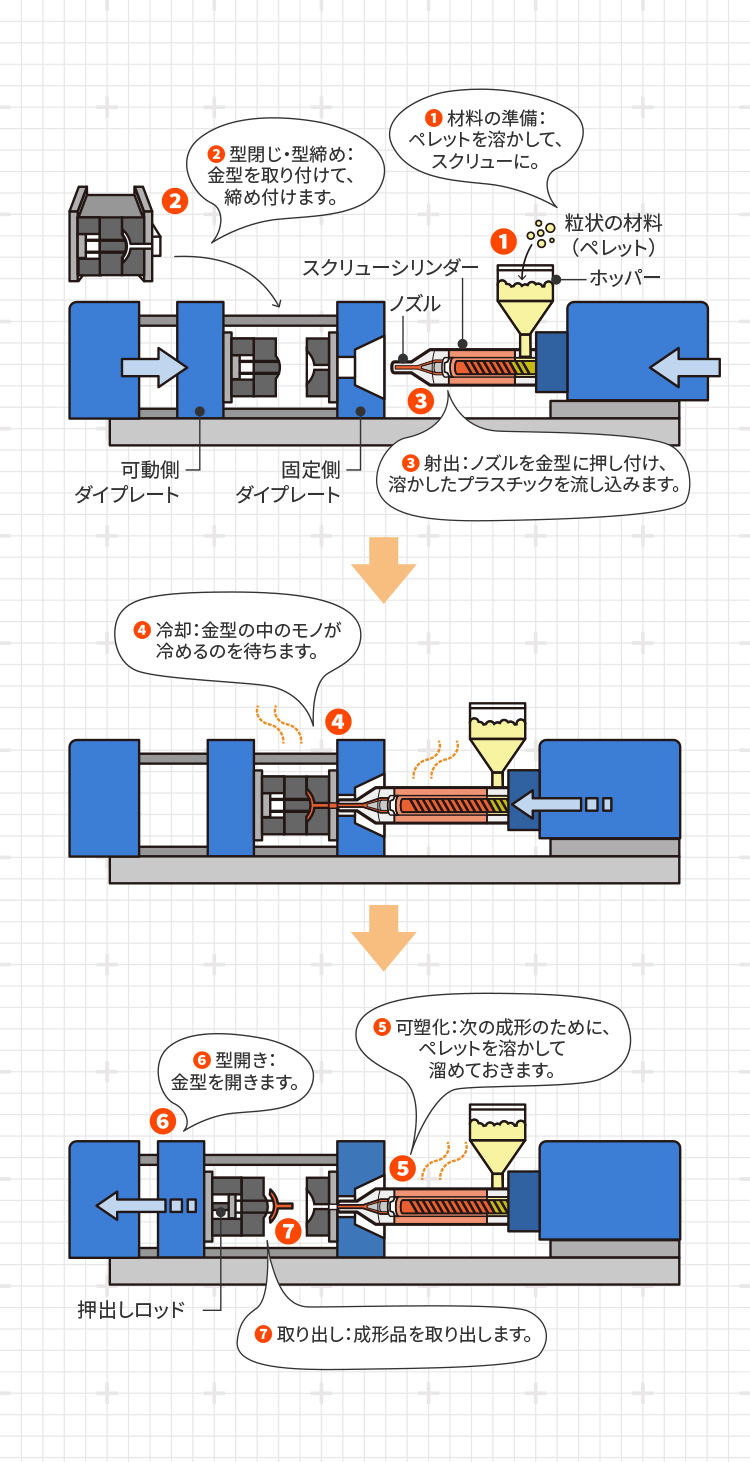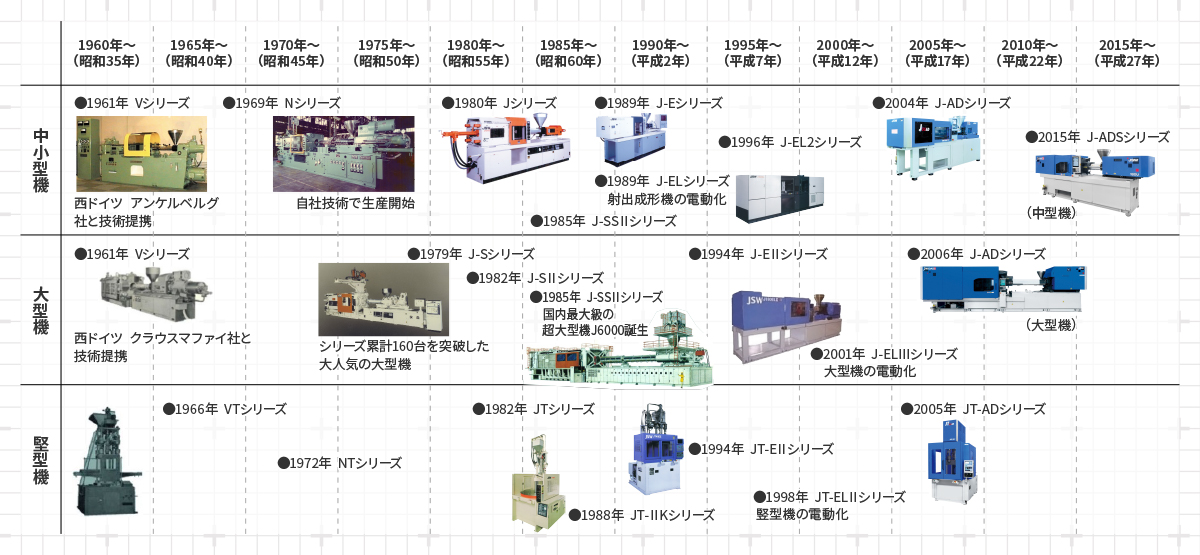

Many of these products familiar in everyday life are manufactured using “injection
molding” manufacturing method.
Can you identify which products are manufactured using this
method and not?
Please remember us, NIPPLA, when you see products / items / goods around
you.
NIPPLA might have been involved in manufacturing the products.
Plastic is indispensable for our life. It is highly possible that injection molding is used for the device you are reading this site with (smart phone, mobile phone, PC). Many of the parts manufactured using injection molding are used for automobiles, as well as for TV, washing machine, printer and other electrical appliances. Those of the products you see and use in everyday life are manufactured by using “injection molding”, such as DVD, Blue-ray disk, grip of screw driver, scissors handle, controller of the TV game and various others.
“Injection molding machine” is so named because it consists of the parts to inject and mold the material. It is the device to form the products by melting the plastic compounds with heat, pouring it into the mold frame (injecting) and putting high pressure to complete the products (molding). Nowadays, magnesium is used for molding the products, in addition to using conventional plastics.
There are numerous injection molding machines in the world. NIPPLA only handles the injection molding machine manufactured by JSW.

The followings, from 1 to 7, are the general flow of injection molding.
By repeating this cycle many times, we continue consecutive mass-production of the products.

Our classification of the small-sized machines is with the molding clamping force between 35 to 180 tons.
Our classification of the medium-sized machines is with the molding clamping force between 220 to 450 tons.
Our classification of the large-sized machines is with the molding clamping force between 550 to 1,800 tons.
Our classification of the extra-large-sized machine is with the molding clamping force over 2,500 tons.
The
largest injection molding machine operated in Japan is J6300E with the size of more than 25 meters.

It is not an overstatement to say the history of injection molding machine in Japan is same as the history of
injection molding machine manufactured by JSW. Since the launch of the V-series in 1961, injection molding
machines have been continued to evolve every year. There are small-sized ones as well as the extra-large-sized
ones. Some are hydraulic and some are electric.
NIPPLA’s maintenance ability is extremely on a high level. We handle not only the latest
models of the machines, but also the machines manufactured 43 years ago. When the parts of the old models are not
in the market anymore, we use the alternative parts for maintenance.
